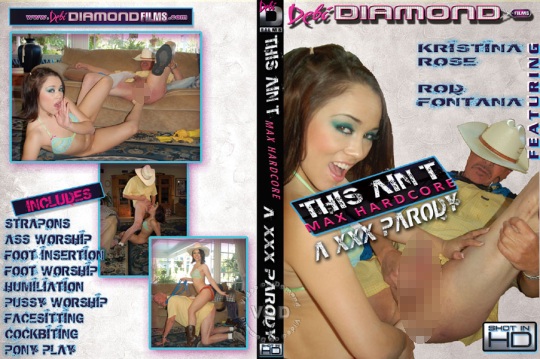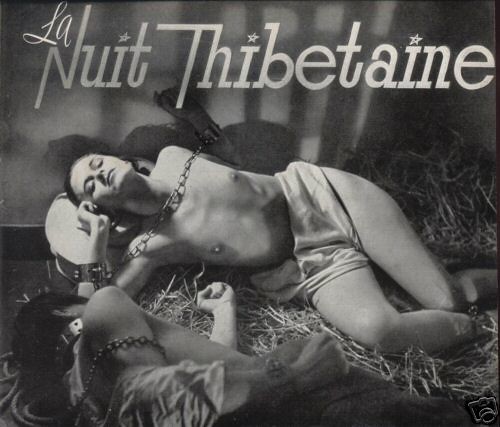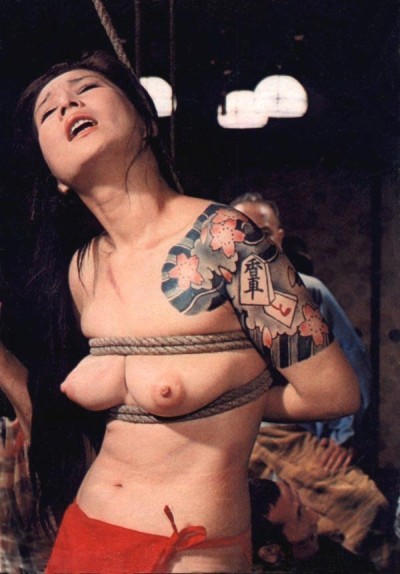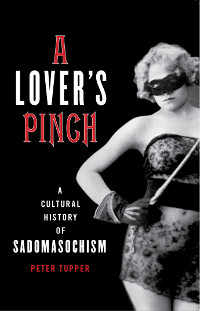
Susannah Breslin’s column has a fascinating article on This ain’t Max Hardcore: a XXX parody. It’s a turn-the-tables scenario in which a baby-doll-style woman beats up and anally foot-fucks an actor playing the famed gonzo porn maker.
Paul “Max Hardcore” Little, currently serving a prison sentence in Florida, is known for his particular style of videos, which Breslin describes thusly:
In his movies, women are urinated upon, forcibly fellated until they vomit, their orifices cranked open with speculums. They are pile-driven, skull-fucked, and fish-hooked. Mostly, they are dressed and behave as if they are underage girls — somewhere in the neighborhood of, say, six or seven. These women-as-girls are accosted on playgrounds, where they suck provocatively on lollipops and respond to Hardcore’s come-ons with baby talk. In their sex scenes — if they can be called that, as they seem more like systematic attempts to break the human spirit recorded on videotape for posterity and profit — Hardcore, who wears a cowboy hat and whose prop of choice is a hideous canary yellow sofa, violates their holes while spewing forth a stream of degrading language.
Assuredly, Hardcore’s movies are not for the faint of heart. They are targeted at a demographic one would perhaps rather not dwell upon the existence of for any length of time. They are less “movies” and more political demonstrations: of power, of violence, of one man’s seeming frustration with the opposite sex: porn’s very own final girl, who, no matter how hard he tries, will not lay down and (pardon my language) fucking die, leaving poor Max with no choice but to return to the scene of the crime and do it all over again.
Breslin cites the “final girl” from Carol J Clover’s book Men, Women and Chainsaws. Clover argues that final girl, with the androgynous name and the ambiguous gender identity, is the one girl who ultimately survives and defeats the killer, who is also riddled with flawed sexuality and gender identity. This is part of the viewer working through his adolescent male sexual anxieties. Hardcore’s oeuvre bears a certain resemblance to the slasher film, an extremely prolific genre in the early and mid 80s, full of endless variation on the same basic formula. The story reminds me a little of Joss Whedon’s Buffy the Vampire Slayer, which was about the standard horror victim into the hero(ine).
So, if Hardcore’s films are working through (however unsuccessfully) male issues with women, what is This is not Max Hardcore working through? Who is going to watch This is not… and who is going to cheer the female protagonist on? If we assume the default viewer of video porn is a young heterosexual white male, then he might make the identification shift (as Clover describes it) from the “monster” to the “final girl”, rooting for the girl to defeat the “dirty old man” archetype represented by Paul Little. Maybe This is not… is the other half of the dialectic, with the first half by the usual Hardcore video.
Arguably, Hardcore’s videos can be seen as an extreme form of “virtue in distress”, a distant descendant of Richardson’s Clarissa, but misread so that the power dynamic is only one way. This video could be seen as a “strong misreading” (as Harold Bloom would put it) of the Hardcore videos that unwittingly returns to the form’s ancestor.
Here’s a question: does the violence of a Max Hardcore video have the same impact when it is a young woman doing it to an older man? Or does femdom-malesub violence not have the same impact because it is not “real”, that we do not take women seriously as agents of violence? When Red Riding Hood fights back against the Big Bad Wolf, is it heroism or a joke?
Breslin’s piece also provides a great look into the porn culture of 2010, with biographical sketches of Debi Diamond, the producer and former porn performer, Rod Fontana (former US Army officer, porn performer and would-be preacher), and Kristina, the vengeful ersatz Max Hardcore girl who described Paul Little as a “sweet, little old man.”
(Note to Ms. Breslin: When are we going to see a non-fiction book from you?)





